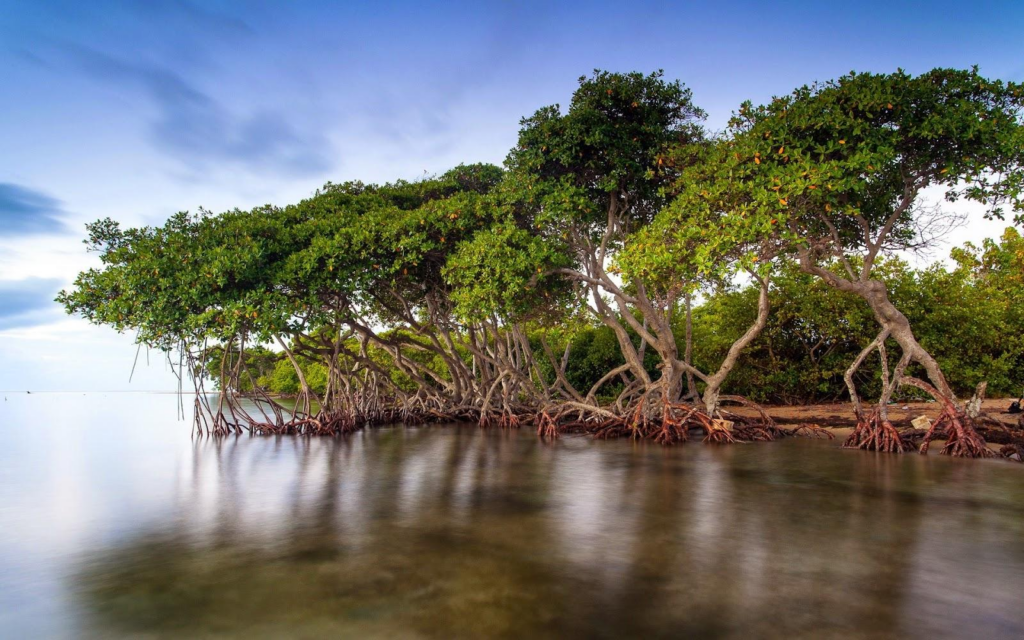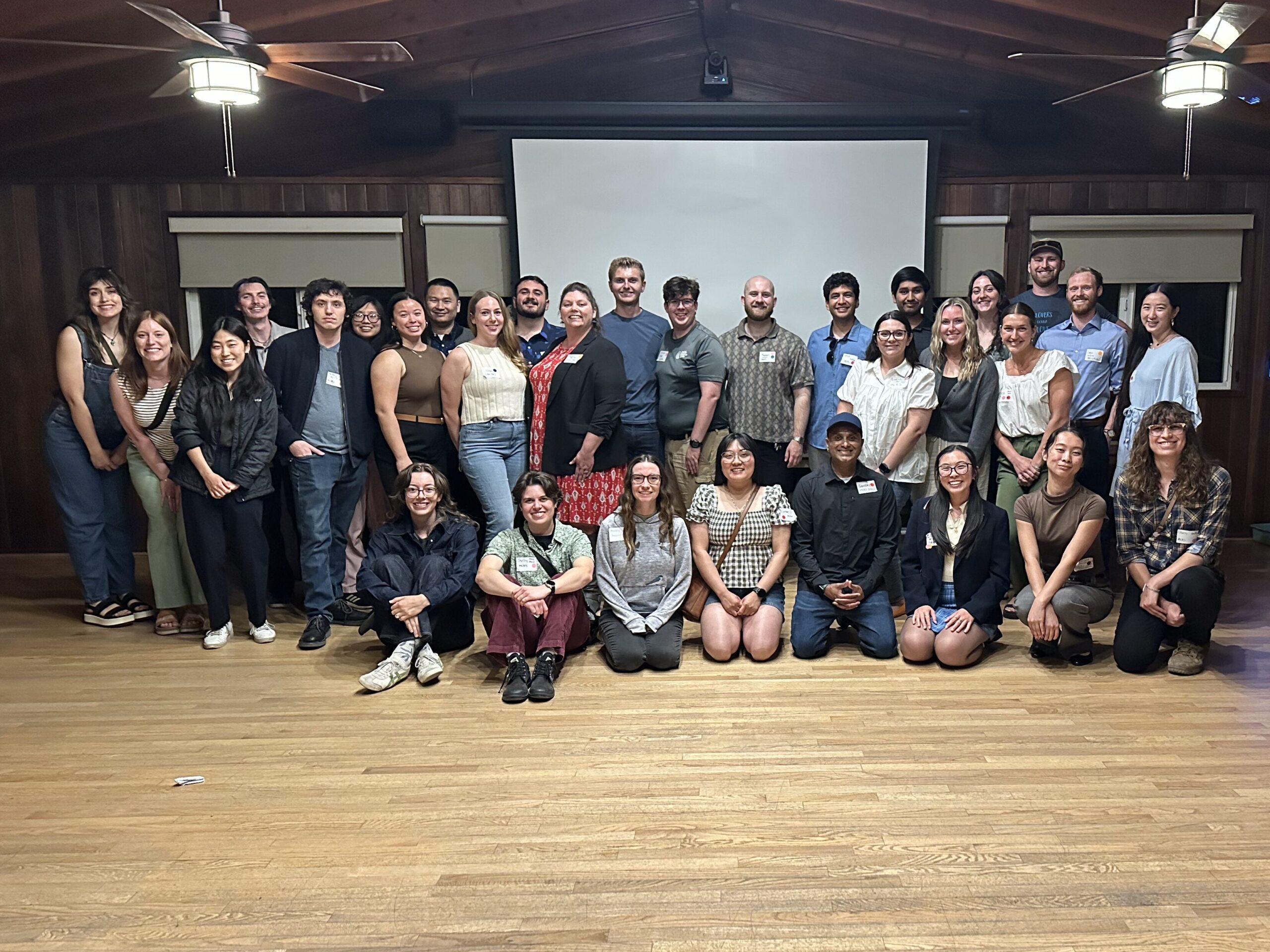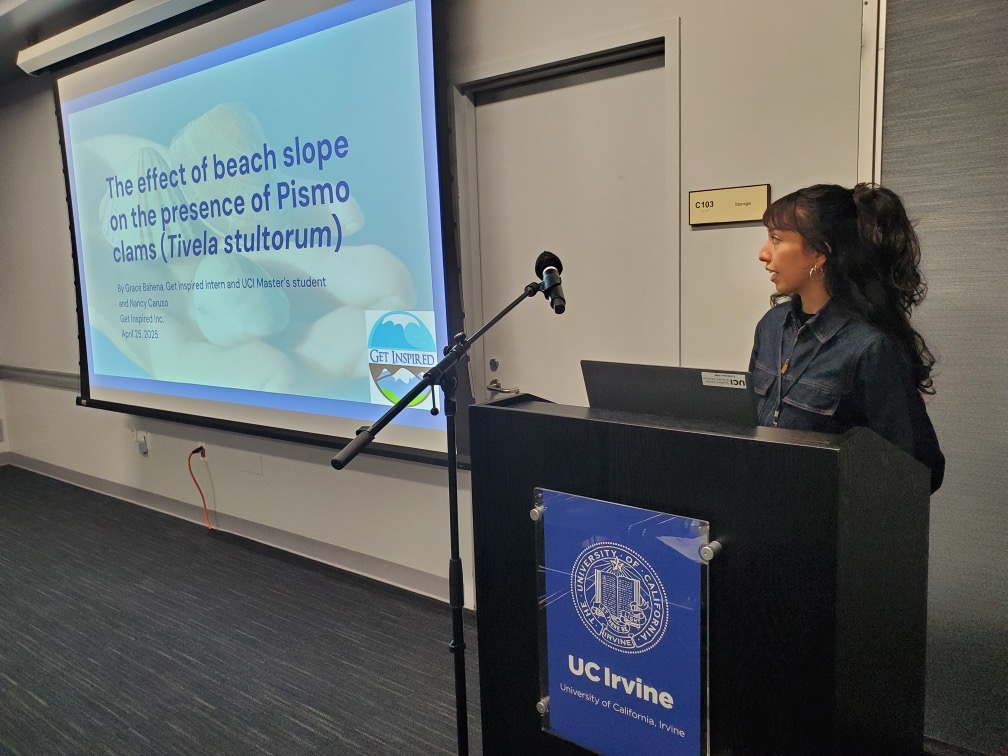Student Blog: “Marsh Madness: Protecting Blue Carbon for a Greener Future” by Summer Calderon
Imagine a bustling city where individuals quietly work behind the scenes amidst the hustle and commotion; their contributions are often overlooked, but their impact is strong. Similarly, coastal and oceanic ecosystems stand as the unsung heroes in the vast expanse of our planet’s carbon cycle. While forests are celebrated for their role in carbon sequestration, these underwater ecosystems silently carry out the important task of combating climate change by storing carbon over long periods. Just like unsung heroes, these ecosystems do not seek recognition or applause. Yet, their efforts are essential for the health of our planet.
Blue Carbon
“Blue” Carbon refers to the carbon captured and stored by coastal and marine ecosystems such as mangroves, seagrass beds, and salt marshes. These habitats act as nature’s carbon sinks, absorbing atmospheric carbon dioxide and transporting it into sediments or deep waters, which can remain indefinitely if left undisturbed (“What Is Blue Carbon?” 2013). Just as trees absorb carbon dioxide during photosynthesis, coastal plants like mangroves, seagrasses, and the ocean soak in carbon dioxide from the atmosphere. This carbon is then stored in the ocean’s depths, locking it away from the atmosphere. This process, known as carbon sequestration, helps reduce the amount of CO2 in the air. Since carbon released into the atmosphere is a primary driver of climate change, these blue carbon zones are essential for protecting all ecosystems and ourselves.
Mangroves
Mangroves, with their tangled roots standing above water, thrive in the extreme conditions of estuaries. These plants absorb carbon dioxide through photosynthesis and store carbon in their roots and sediments. Mangroves’ unique features also allow them to withstand the changing tides of the day and help protect our coastlines from erosion and storms.

Mangroves Southern US Coast – Credit: UMass Amherst
Seagrass Beds
Seagrass beds provide a habitat and food source for various animals, from small invertebrates to large marine mammals and birds. The meadows keep soil stable on the ocean floor, helping keep carbon in place. Additionally, seagrass beds help protect coastline shores and clean our waters.

Seagrass with School of Fish – Credit: The Ocean Foundation
Salt Marshes
Salt Marshes, flooded and drained by saltwater tides, connect the land and sea. This blue carbon ecosystem stores carbon through photosynthesis and organic matter accumulation. Along with carbon storage, salt marshes are a super ecosystem capable of protecting coasts from storms, purifying fresh water, and acting as fish nurseries that provide humans with fresh seafood.

Bolsa Chica Salt Marsh – Credit: Bolsa Chica Conservancy
Threats to Blue Carbon Ecosystems
Despite their importance, many of these blue carbon zones face destruction from climate change and human destruction. As these essential habitats are destroyed, stored carbon and other trapped gases are released back into the atmosphere at much higher rates than our environment can handle. Losing these habitats would also threaten countless species, disrupt marine ecosystems, harm livelihoods and economies, and increase vulnerability to the impacts of storms.
“Worldwide, an estimated 450 million metric tons of carbon dioxide—equivalent to more than 97 million cars’ worth—is emitted from the destruction of coastal wetlands each year, accelerating planetary warming and climate change.”
“Coastal ‘Bue Carbon’: An Important Tool for Combating Climate Change,” 2021.
This quote from Coastal “Blue Carbon” helps emphasize how the current loss of blue carbon zones affects the planet. Blue carbon habitats are being destroyed globally for various reasons, including urban development, agriculture, fish farming, and rising sea levels. While there is growing research on the importance of blue carbon ecosystems, there is still a lack of guidance on how to use this information to protect these ecosystems. Unfortunately, the lack of action to protect blue carbon zones from climate change and urbanization could lead to more greenhouse gas emissions and loss of carbon sinks. At our current decline rates, around 30-40% of seagrass beds, salt marshes, and nearly 100% of mangroves may even be lost within the next 100 years (IPCC 2007; Duke et al. 2007).
Who Can Save the Day? MPAs!
However, not all hope is lost! There is growing momentum to protect, restore, and manage our carbon storage sites through different policies and tools. One such tool is marine protected areas (MPAs).
Marine protected areas can play a crucial role in safeguarding these valuable ecosystems. Think of MPAs as libraries filled with valuable books and knowledge. Just as libraries preserve and protect important information, MPAs safeguard marine biodiversity and ecosystem functions, serving as storehouses of life in the ocean. By designating coastlines or marine habitats as MPAs, we can protect carbon sinks, minimize disturbance, and address factors such as invasive species and habitat destruction. For example, establishing an MPA along a coastline with extensive mangrove forests may help protect this vital carbon sink from deforestation and destruction. By preventing the clearing of mangroves for development or fish farms, the MPA ensures that these ecosystems can continue sequestering carbon and providing other ecosystem services.
In the United States, over 1,700 MPAs cover approximately 41% of US waters, with initiatives like the America The Beautiful Initiative aiming to restore another 30% of lands and waters by 2030 (“America The Beautiful,” 2021). These efforts will ideally protect valuable marine ecosystems and diversify future protected areas, ensuring the preservation of blue carbon zones (NOAA).
MPAs can protect healthy marine ecosystems, prevent disturbance to carbon stored in sediments, address factors affecting carbon storage, and provide focal points for restoring blue carbon habitats. As nations worldwide recognize the importance of coastal blue carbon in fighting climate change, research, and conservation efforts continue to grow.
California Marine Sanctuary – Image credit: Flickr, Quintin.
Call to Action
Protecting our blue carbon zones, made up of mangroves, seagrass beds, and salt marshes, benefits wildlife and supports human populations by providing environmental benefits for present and future generations. By embracing the power of blue carbon and utilizing the protection of MPAs to ensure that blue carbon zones stay safe, we can pave the way for a more sustainable and resilient future for all. Not only do healthy blue carbon zones protect our waters, but healthy coastal ecosystems can be a strong partner in fighting climate change and solving other environmental problems worldwide.
So, what can we do to fight for our blue carbon zones?
- Educate and Raise Awareness: The easiest and most effective way to get involved is to pass on what you have learned and continue researching the importance of blue carbon. Educating your friends and family about the importance of blue carbon zones and the threats they face can raise awareness and inspire action.
- Support Conservation Efforts: Anyone can support local conservation organizations with initiatives dedicated to protecting and restoring coastal ecosystems like mangroves, seagrass beds, and salt marshes. The National Oceanic and Atmospheric Administration (NOAA) and National Park Services provide excellent resources about local MPAs and updated news. If you do not live near a coastline, organizations that focus on fighting climate change also provide great learning resources.
- Reduce Carbon Footprint: One of the most effective ways to protect blue carbon zones is to reduce carbon emissions. Individuals can reduce their carbon footprint by conserving energy, using public transportation, adopting renewable energy sources, and making sustainable lifestyle choices.
California Coastline – Image Credit – Greg Tucker




